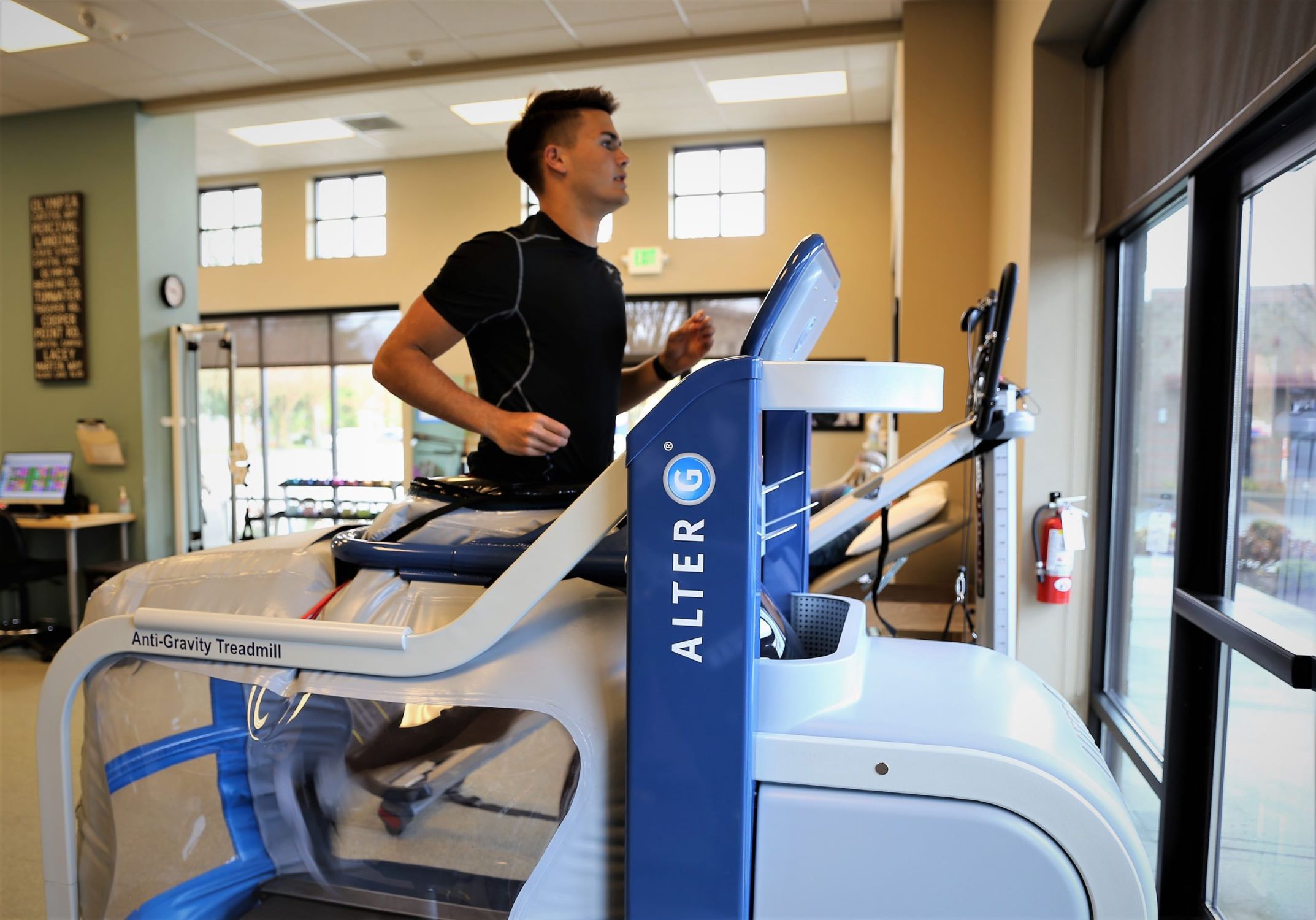Home>Misc>Featured>What Is A Point Of Focus During Health Inspections


Featured
What Is A Point Of Focus During Health Inspections
Modified: January 2, 2024
Discover the key components assessed during health inspections, including the featured point of focus. Learn how it impacts the overall quality and safety of healthcare facilities.
Introduction
Health inspections play a crucial role in ensuring the safety and cleanliness of various establishments, such as restaurants, hotels, and healthcare facilities. These inspections aim to assess compliance with health and safety regulations, identify potential hazards, and protect the well-being of consumers. In this article, we will explore the point of focus during health inspections and the significance of addressing violations found during these inspections.
Health inspections are conducted by regulatory authorities, such as the Department of Health or the Food and Drug Administration, to verify that establishments are maintaining proper hygiene, sanitation, and food handling practices. These inspections are typically unannounced, which allows inspectors to assess the establishment’s daily operations without any preparations.
During a health inspection, inspectors thoroughly examine various aspects of the establishment, including:
- The cleanliness of the premises, including the kitchen, dining areas, restrooms, and storage spaces.
- The proper storage and handling of food to prevent contamination and the growth of bacteria.
- The condition and maintenance of equipment and facilities, such as refrigerators, sinks, ventilation systems, and plumbing.
- The implementation of proper food safety protocols, including temperature control, cross-contamination prevention, and proper labeling.
- The knowledge and training of employees in food safety practices, including proper handwashing, sanitization, and personal hygiene.
The objective of health inspections is to identify and rectify any potential risk factors that could compromise public health. By addressing violations and implementing necessary corrective measures, establishments can ensure a safe and healthy environment for their customers and employees.
In the following sections, we will delve deeper into the factors considered during health inspections, the specific point of focus during these evaluations, common violations found, and the consequences of failing health inspections. Additionally, we will provide valuable tips on how establishments can effectively prepare for health inspections and maintain compliance with health and safety regulations.
Purpose
The primary purpose of health inspections is to safeguard public health and ensure the safety and hygiene of establishments that provide goods or services to the community. These inspections serve as a preventive measure to identify and address potential health hazards before they can cause harm to consumers.
By conducting regular health inspections, regulatory authorities can monitor compliance with health and safety regulations, identify areas of improvement, and provide guidance to establishments to maintain high standards of cleanliness and safety.
Another important purpose of health inspections is to educate and raise awareness among establishments about proper sanitary practices and food handling procedures. Inspectors often provide valuable feedback and advice on how to maintain a clean and healthy environment, minimize risks of foodborne illnesses, and implement best practices for safety.
Furthermore, health inspections promote transparency and trust between establishments and their customers. When an establishment passes a health inspection, it demonstrates its commitment to maintaining high standards of cleanliness and safety. This knowledge reassures consumers that the establishment is taking all necessary precautions to protect their well-being.
In the event that violations are found during a health inspection, the purpose shifts to corrective action. The establishment is typically given a timeframe to rectify the issues and bring their practices in line with health and safety standards. This ensures that potential risks are eliminated and that consumer safety is prioritized.
In summary, the purpose of health inspections is threefold: to protect public health, to educate and guide establishments in maintaining cleanliness and safety standards, and to foster trust and transparency between establishments and their customers. By serving these purposes, health inspections contribute to the overall well-being of the community and ensure that consumers can confidently patronize establishments that prioritize their safety and health.
Definition of Health Inspections
Health inspections are systematic assessments conducted by authorized regulatory bodies to evaluate the compliance of establishments with health and safety regulations. These inspections are designed to assess various aspects of an establishment’s operations, including hygiene practices, food handling procedures, facility maintenance, and employee training.
Health inspections are typically carried out by trained professionals from government agencies, such as the local Department of Health or the Food and Drug Administration. These inspectors have the authority to enter establishments at any time, without prior notice, to conduct their evaluations.
During a health inspection, the inspector follows a predefined checklist that covers a wide range of criteria. This checklist includes items such as:
- Proper storage and handling of food to prevent contamination
- Adherence to food temperature control guidelines
- Maintenance of clean and sanitary kitchen and dining areas
- Functionality and cleanliness of equipment and utensils
- Employee hygiene and safe food handling practices
- Proper labeling and storage of chemicals and cleaning agents
- Availability and use of handwashing facilities
- Implementation of pest control measures
Inspectors observe and assess various aspects of the establishment, asking questions, taking notes, and collecting samples for testing as needed. They may also consult relevant records and documentation, such as food safety plans and employee training records, to ensure compliance with regulations.
Based on their findings, inspectors assign a score or rating to the establishment, which can range from “pass” to “conditional pass” or “fail.” Establishments that receive a “conditional pass” or “fail” must take corrective actions within a specified timeframe to address violations and ensure compliance.
Health inspections are an essential regulatory tool to protect public health and prevent the spread of foodborne illnesses. By assessing establishments’ compliance with health and safety regulations, health inspections provide consumers with the assurance that the places they eat, stay, or receive services from are meeting acceptable standards of cleanliness, sanitation, and safety.
Importance of Health Inspections
Health inspections hold significant importance in ensuring the safety and well-being of the public. They play a crucial role in upholding standards of cleanliness, hygiene, and safety in various establishments. Here are several reasons why health inspections are important:
Prevention of Foodborne Illnesses: Health inspections help prevent the spread of foodborne illnesses by identifying and addressing potential hazards that could contaminate food. By assessing hygiene practices, proper food handling, and overall cleanliness, inspectors can ensure that establishments are minimizing the risk of foodborne pathogens and harmful bacteria.
Protection of Public Health: Health inspections are conducted with the primary objective of protecting the health of consumers. By identifying and remedying violations, health inspections prevent the occurrence of diseases transmitted through food, water, or unsanitary conditions. This safeguarding of public health creates a safer and healthier environment for the community.
Consumer Confidence: Health inspections help build and maintain consumer confidence in establishments. When patrons see a prominently displayed health inspection report indicating compliance, they gain trust in that establishment’s commitment to maintaining high standards of cleanliness and safety. It reassures customers that their well-being is a top priority and encourages them to continue supporting the business.
Identification of Risks and Hazards: Health inspections allow for the identification of risks and hazards that may not be apparent to the establishment. Inspectors have extensive knowledge and experience in recognizing potential issues, such as improper storage of toxic substances, cross-contamination risks, or unsanitary practices. By highlighting these risks, inspectors can guide establishments in taking appropriate corrective measures to mitigate potential harm.
Educational Opportunities: Health inspections also serve as educational opportunities for establishments to learn about best practices in maintaining cleanliness, proper food handling, and employee training. Inspectors offer guidance and advice on areas for improvement, sharing insights on how establishments can enhance their operations to meet or exceed health and safety regulations.
Continuous Improvement: Health inspections promote a culture of continuous improvement in establishments. By regularly assessing and monitoring compliance, establishments are encouraged to maintain high standards and make necessary adjustments to their processes, facilities, and training programs to ensure ongoing adherence to health and safety guidelines.
Overall, health inspections are instrumental in protecting public health, building consumer confidence, and fostering the delivery of safe and hygienic services. These inspections provide valuable feedback, educational opportunities, and guidance for establishments to continuously improve their practices and maintain a safe environment for all.
Factors Considered during Health Inspections
During health inspections, inspectors carefully assess various factors to ensure compliance with health and safety regulations. These factors cover a wide range of aspects within an establishment and contribute to the overall assessment of its cleanliness, sanitation, and adherence to food handling protocols. Here are the key factors considered during health inspections:
Food Handling and Storage: Inspectors closely examine how food is handled, stored, and prepared to prevent contamination and ensure proper hygiene. They assess factors such as the temperature control of perishable foods, separation of raw and cooked items, and the labeling and storage of chemicals and cleaning agents.
Sanitation and Cleanliness: Inspectors evaluate the cleanliness and sanitation practices within the establishment, including kitchen and dining areas, restrooms, storage spaces, and utensils. They assess the effectiveness of cleaning procedures, the presence of pests or signs of infestation, and the overall cleanliness of surfaces and equipment.
Facility Maintenance and Condition: The condition and maintenance of the establishment’s physical facilities is another crucial factor. Inspectors check the functionality and cleanliness of equipment, such as refrigerators, ovens, ventilation systems, and plumbing. They also examine the structural integrity of the premises, ensuring that there are no leaks, broken tiles, or other hazards that could compromise hygiene or safety.
Employee Practices and Training: Inspectors assess the knowledge and practices of employees regarding food safety protocols and personal hygiene. This includes proper handwashing techniques, wearing appropriate protective gear, and following safe food handling procedures. They also check if establishments maintain records of employee training and certification in food safety.
Documentation and Compliance: Regulatory compliance is a key consideration during health inspections. Inspectors review required documentation, such as permits, licenses, and employee health records. They check if the establishment has a clearly defined food safety plan in place, adequate record-keeping procedures, and sufficient documentation of purchases and supplier information.
Overall Safety Measures: Inspectors evaluate the establishment’s adherence to general safety measures beyond food handling. This may include checking fire safety precautions, the presence of functioning fire extinguishers, emergency exits, and properly maintained electrical systems.
It is important to note that the specific factors and regulations considered during health inspections may vary depending on the type of establishment being inspected. Different industries, such as restaurants, hotels, or healthcare facilities, may have unique regulations and requirements tailored to their specific operations.
By assessing these factors, health inspections ensure that establishments maintain proper hygiene, sanitation, and food handling practices, thereby reducing the risk of foodborne illnesses and ensuring the safety of the public.
Point of Focus during Health Inspections
During health inspections, there are several key areas that inspectors pay close attention to. These points of focus are critical in ensuring the safety and cleanliness of establishments, as well as the protection of public health. Here are the primary points of focus during health inspections:
Temperature Control: Inspectors closely monitor the temperature control of perishable foods, both during storage and preparation. They check that refrigerated items are stored at the appropriate temperature to prevent bacterial growth, and that hot foods are maintained at safe holding temperatures to prevent the growth of harmful pathogens.
Prevention of Cross-Contamination: Preventing cross-contamination is a major concern during health inspections. Inspectors pay close attention to practices that minimize the transfer of pathogens from one surface or food item to another. This includes ensuring proper separation of raw and cooked foods, using separate cutting boards and utensils for different ingredients, and practicing good hand hygiene during food handling.
Hygiene Practices: Inspectors assess the personal hygiene practices of employees, including proper handwashing techniques, wearing appropriate protective gear such as gloves and hairnets, and maintaining clean and tidy personal appearance. They look for indications that employees understand and practice good hygiene habits to prevent the contamination of food.
Cleanliness of Facilities: The cleanliness of the establishment’s facilities is a critical point of focus. Inspectors assess the cleanliness of the kitchen, dining areas, restrooms, and storage spaces. They look for proper sanitation practices, such as regular cleaning, sanitizing of utensils and equipment, and the absence of pests or signs of infestation.
Food Storage and Labeling: Inspectors ensure that proper food storage practices are followed, including appropriate packaging, labeling, and dating of food items. They check that potentially hazardous items are stored correctly to prevent contamination, and that labels are accurate and legible to inform consumers about the contents and any potential allergens.
Employee Training and Knowledge: Inspectors assess the knowledge and training of employees in food safety practices. They may ask specific questions to gauge employees’ understanding of proper food handling, storage procedures, and personal hygiene. They also check if establishments maintain records of employee training and certification in food safety.
Documentation and Compliance: Inspectors review required documentation and regulatory compliance during health inspections. They verify that the establishment holds the necessary permits, licenses, and certificates. They also check if the establishment maintains accurate records of food safety plans, employee health records, and supplier information.
It is important for establishments to pay attention to these points of focus and ensure that they maintain high standards in each area. By addressing these crucial aspects, establishments can reduce the risk of foodborne illnesses, maintain cleanliness, and protect the health and safety of their customers.
Common Violations Found during Health Inspections
Health inspections often uncover various violations that indicate non-compliance with health and safety regulations. While the specific violations can vary depending on the type of establishment, there are several common infractions that inspectors frequently encounter. Being aware of these common violations can help establishments prioritize their efforts to maintain compliance. Here are some of the most common violations found during health inspections:
Poor Personal Hygiene Practices: Inspectors frequently observe violations related to poor personal hygiene practices among employees. These may include improper handwashing techniques, failure to wear appropriate protective gear, or lack of clean clothing. Insufficient training and inadequate employee education on personal hygiene contribute to these violations.
Improper Food Storage and Handling: Violations in this category often involve improper storage temperatures, such as keeping perishable foods at incorrect temperatures, which can lead to bacterial growth and foodborne illnesses. Cross-contamination violations, such as storing raw meat above ready-to-eat foods, can also occur. Additionally, improper thawing techniques and inadequate labeling and dating of food items are commonly found violations.
Lack of Sanitation and Cleanliness: Inspectors frequently encounter violations related to sanitation and cleanliness in various areas of establishments. These violations may include unclean or unsanitary kitchen and dining areas, inadequate cleaning and sanitizing of utensils and equipment, and poor maintenance of restrooms and storage spaces. Pests or signs of infestation also contribute to sanitation violations.
Inadequate Pest Control: Failure to implement effective pest control measures is another common violation. This includes not having proper sealing of entry points, failure to conduct routine inspections for pests, and inadequately addressing pest issues when they arise. Presence of pests can contaminate food and pose a health risk to customers.
Insufficient Employee Training: Violations related to insufficient employee training occur when employees lack proper knowledge and understanding of food safety practices. This includes improper handling of food, lack of awareness about potential allergens, and inadequate understanding of health and safety regulations. Establishments should prioritize regular training to ensure employees are well-informed and compliant with regulations.
Equipment Maintenance Issues: Violations in this category pertain to the improper maintenance of equipment and facilities. This includes malfunctioning refrigeration systems, broken or faulty equipment, and issues with plumbing or ventilation systems. Failure to address equipment maintenance issues can compromise food safety and overall cleanliness of the establishment.
Lack of Proper Documentation: Inspectors often find violations related to documentation and record-keeping. This includes failure to maintain required permits, licenses, and certificates, incomplete or inaccurate record-keeping of employee training, and inadequate documentation of cleaning schedules and supplier information. Establishments should ensure that all necessary documentation is up to date and readily available during health inspections.
It is important for establishments to address these common violations promptly and take necessary corrective actions to maintain compliance with health and safety regulations. By addressing these areas, establishments can create a safer and healthier environment for their customers and ensure that they are meeting the required standards of cleanliness and safety.
Consequences of Failing Health Inspections
Failing a health inspection can have significant consequences for establishments, ranging from reputational damage to legal and financial repercussions. When an establishment fails a health inspection, it signifies that it has not met the required health and safety standards set by regulatory authorities. Here are some of the common consequences of failing health inspections:
Negative Impact on Reputation: Failing a health inspection can tarnish the reputation of an establishment. Word spreads quickly in the era of online reviews and social media, and customers may choose to avoid establishments with a history of health violations. This can lead to a loss of business, decreased customer trust, and difficulty in regaining a positive reputation.
Legal Consequences: Failing health inspections can result in legal consequences, such as fines, citations, or closure orders. Regulatory authorities have the power to impose penalties and take legal action against establishments that repeatedly fail to meet health and safety standards. The severity of the legal consequences depends on the nature and extent of the violations.
Business Disruption and Closure: In extreme cases, failing a health inspection can lead to temporary or permanent closure of an establishment. Regulatory authorities may issue closure orders if the violations pose an immediate threat to public health or if establishments fail to take prompt corrective actions. This can result in significant financial losses and may require establishments to make costly renovations or changes to pass future inspections.
Loss of Trust and Customer Loyalty: Failing health inspections erodes customer trust and loyalty. When customers learn that an establishment has failed to meet health and safety standards, they may doubt the establishment’s commitment to their well-being. This loss of trust can lead to a decreased customer base, negative online reviews, and a decline in repeat business.
Potential Health Risks: Failing health inspections indicates that an establishment has violated health and safety regulations, which can pose risks to public health. The violations identified during inspections often relate to improper food handling, inadequate sanitation, and potential contamination hazards. These risks can lead to foodborne illnesses and other health issues for customers who consume products or services from the non-compliant establishment.
Recurring Inspections and Increased Scrutiny: Failing a health inspection can also result in increased scrutiny from regulatory authorities. Inspectors may schedule more frequent inspections to ensure that establishments are taking necessary corrective actions. This heightened scrutiny adds pressure on the establishment to maintain compliance and can be time-consuming and resource-intensive.
In summary, failing a health inspection can have severe consequences for establishments, including damage to reputation, legal ramifications, closure orders, loss of customer trust and loyalty, potential health risks for consumers, and increased scrutiny from regulatory authorities. It is crucial for establishments to prioritize maintaining high health and safety standards to avoid these adverse outcomes and ensure the well-being of their customers.
Tips for Preparing for a Health Inspection
Preparing for a health inspection is essential to ensure that an establishment is ready to meet the required health and safety standards. By implementing preventive measures and taking proactive steps, establishments can increase their chances of passing a health inspection. Here are some tips to help prepare for a health inspection:
Regular Staff Training: Conduct regular training sessions for all staff members to ensure they are knowledgeable about proper hygiene practices, food handling procedures, and health and safety regulations. Keep detailed records of employee training and certification to demonstrate compliance with training requirements.
Establish a Cleaning Schedule: Maintain a comprehensive cleaning schedule that outlines routine cleaning tasks and responsibilities for different areas of the establishment. Regularly clean and sanitize all surfaces, utensils, and equipment to prevent the buildup of dirt, grime, and potential contaminants.
Monitor and Maintain Temperature Logs: Regularly monitor and record temperatures of food storage areas, refrigerators, and freezers to ensure they are within safe range. Keep thorough temperature logs as evidence of proper temperature control practices.
Implement a Food Safety Plan: Develop and implement a comprehensive food safety plan that includes proper food storage, handling, and preparation procedures. Clearly define critical control points and establish protocols to ensure food safety throughout all stages of production and service.
Ensure Proper Documentation: Keep all necessary permits, licenses, and certificates up to date and easily accessible. Maintain accurate records of daily cleaning, maintenance, employee training, and other relevant documentation that may be required during a health inspection.
Conduct Self-Inspections: Regularly conduct self-inspections using a checklist similar to what health inspectors use. This allows you to identify and address potential violations before an actual inspection. Address any issues promptly to maintain compliance and minimize risks.
Maintain Food Allergen Awareness: Train staff on proper allergen handling and awareness to prevent cross-contamination and properly disclose allergens in food ingredients and menus. Implement clear labeling and communicate with customers about potential allergen risks.
Properly Label and Store Chemicals: Ensure that chemicals, cleaning agents, and other hazardous substances are properly labeled, stored, and kept away from food storage and preparation areas. This helps prevent accidental contamination and ensures safe usage.
Address Maintenance and Equipment Issues: Regularly inspect and maintain all equipment, plumbing, ventilation systems, and general facility infrastructure. Promptly address any maintenance issues to prevent breakdowns, leaks, and other problems that can compromise cleanliness and safety.
Establish Open Communication: Encourage staff to report any potential issues or concerns related to health and safety. Foster an open dialogue where employees feel comfortable discussing areas that need improvement, allowing for proactive resolution of problems before they escalate.
By following these tips and maintaining a consistent focus on cleanliness, hygiene, and adherence to health and safety regulations, establishments can improve their chances of passing health inspections. Remember, preparation is key, and ongoing diligence is necessary to ensure the long-term success and compliance of the establishment.
Conclusion
Health inspections are a crucial aspect of ensuring the safety, cleanliness, and compliance of establishments with health and safety regulations. These inspections play a vital role in preserving public health, preventing foodborne illnesses, and maintaining consumer trust.
Throughout this article, we explored the purpose and significance of health inspections, as well as the factors considered during these evaluations. We discussed the specific point of focus that inspectors have during health inspections and identified the common violations often found. Additionally, we discussed the consequences of failing a health inspection and provided practical tips for preparing for these evaluations.
It is important for establishments to prioritize health and safety measures by implementing proper hygiene practices, ensuring food handling protocols are followed, and maintaining cleanliness and sanitation standards. By doing so, establishments can create a safe and healthy environment for customers and employees, as well as protect their reputation and avoid legal repercussions.
Continuous training, regular self-inspections, and open communication within the establishment are key strategies to stay prepared for health inspections. It is essential to remember that health inspections are not simply bureaucratic procedures, but crucial mechanisms for safeguarding public health and ensuring the well-being of the community. Establishments should view health inspections as opportunities to learn, improve, and maintain the highest standards of cleanliness, hygiene, and safety.
By being proactive in addressing violations, promoting a culture of compliance, and maintaining ongoing vigilance in health and safety practices, establishments can not only pass health inspections but also foster trust and loyalty among customers. Ultimately, the goal is to create an environment where customers can confidently enjoy goods and services, knowing that their health and well-being are top priorities.









